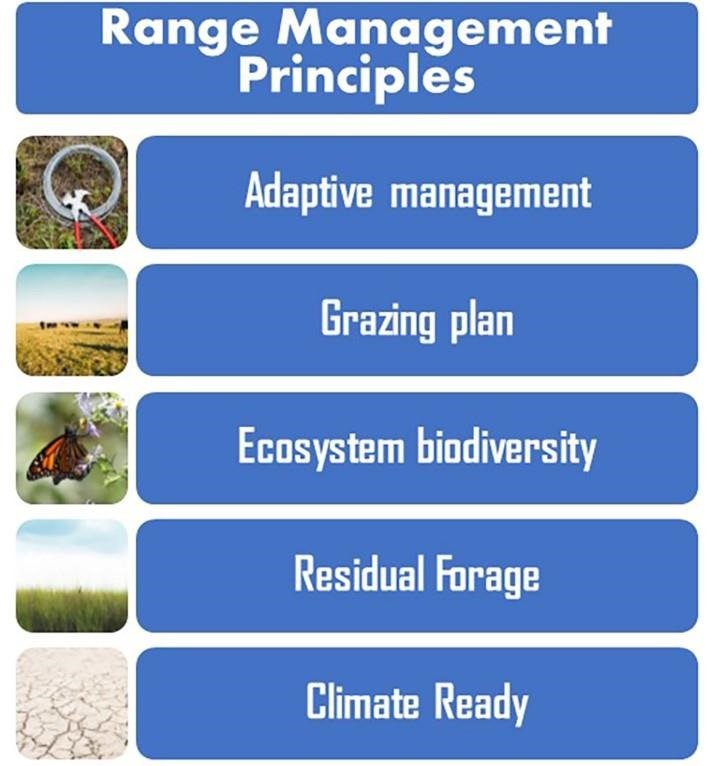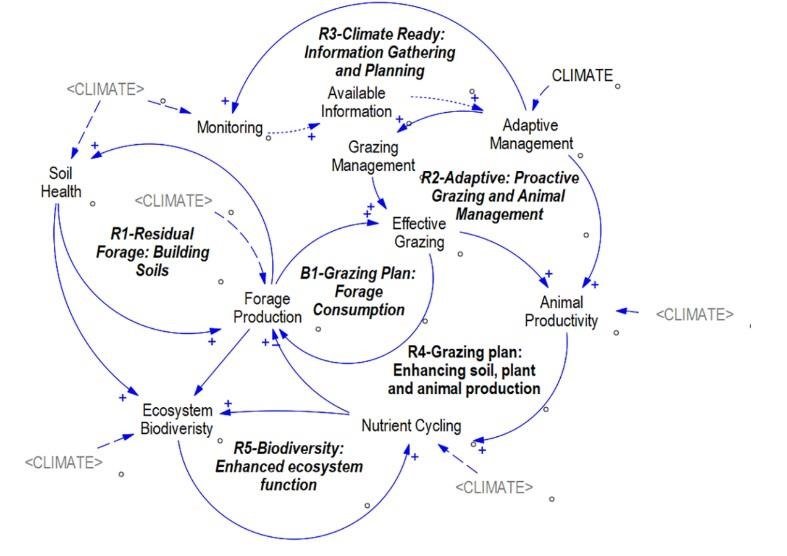By Krista Ehlert
Overview
Regenerative agriculture is becoming a prominent phrase in the agriculture industry. From regenerative crop systems to regenerative grassland management, many practices of renewing or regenerating natural resources through management are growing in popularity. What is regenerative agriculture exactly? Regenerative agriculture is producing agricultural products, such as crops or livestock, in a holistic way so that all parts of the ecosystem benefit and can restore themselves to a healthy and productive state. Parts of the ecosystem include the soil, plants, animals (both livestock and wildlife), human interactions and climatic conditions.
Regenerative Rangelands
Using regenerative management on grassland ecosystems is especially crucial to help producers manage weather and climate challenges that are inherent to ranching in South Dakota and the Northern Great Plains. To help ranchers with this, a new article series that is specific to grassland regeneration has been created called Regenerative Rangelands. The goal of the series is to educate landowners and producers on grazing management and other decisions that impact the sustainability of their ranching operation. Regenerative Rangelands will focus on the regeneration of grassland ecosystems, with an objective to manage pastures holistically to promote the native plant community that was intact before settlement. To achieve the objectives of the series, members of the SDSU Extension Range Team (Krista Ehlert, Sean Kelly, Pete Bauman, Hector Menendez, Jamie Brennan and former SDSU Extension field specialist, Jessalyn Bachler) established five range management principles, or “Rancher Rules” to follow. When applying these principles and making changes to an operation, it is crucial that ranchers determine what information is scientifically correct and what methods are feasible to implement on their operation. Despite many alternative methods like “take half, leave half,” adaptive multi-paddock grazing (AMP) or management intensive grazing (MIG), rangeland management principles are limited, never changing and withstand the test of time. Thus, ranchers should rely on the following range management principles as a starting point for what management methods will be most effective on their operation.
Five “Rancher Rules” or Range Management Principles

Figure 1. The five range management principles or Rancher Rules.
Adaptive Management
The first principle is adaptive management. Producers should always be ready to implement adaptive management to adjust to environmental and industry changes. As the industry changes and continues to evolve, it is important to have an open mind about new ideas, especially with technological advancements. However, be sure to weigh out what will work for your operation before adding it. Adaptive management also involves monitoring rangelands throughout the year and adjusting management based on what the land is telling you from the collected data. An example of applying adaptive management in your operation is adjusting your stocking rate mid-grazing-season due to low forage production caused by drought (See Figure 2, R2 Loop).
Grazing Plan
The second principle is to create a rotational grazing plan, with plan being the keyword. A grazing plan or system is a guide to follow throughout the grazing season to ensure your rangeland is being properly grazed (at the right time, for the correct duration, with the proper number of animals) and receiving an adequate recovery period to promote the native plant community. With any grazing plan, producers must be ready to implement adaptive management and make changes if necessary. Stocking rates should be adjusted from year to year to match fluctuations in forage production and carrying capacity. A grazing plan should be changed from year to year to ensure different plants are being grazed at different times throughout the season. In essence, “don’t do the same thing at the same time in the same place two years in a row.” Your grazing plan not only needs to fit the type of land you are grazing, but also your management style (See Figure 2, B1 Loop).
Ecosystem Biodiversity
The third principle is to promote ecosystem biodiversity. Ecosystem biodiversity is the basis of all holistic management. It helps keep all parts of the system (soil, plants, animals, humans) intact and functioning. Having a diverse rangeland will lead to a diverse animal community, both above and below ground. Insects and microorganisms feed on different types of plant roots and root exudates; wildlife and pollinators utilize various plants; even particular livestock species graze different plant species. Ecosystem biodiversity is key to an operation’s success during challenging years. For example, in a drought, some plants may never come out of the dormant state, while others handle it quite well. Having a diverse plants species will increase the availability of palatable forage, that more adequately meets livestock nutrient requirements (protein and energy), for grazing throughout the season (See Figure 2, R5 Loop).
Residual Forage
The fourth principle is to leave enough residual forage on top of the soil to keep the system functioning properly. Residual forage or residue (commonly referred to as litter) is a critical part of the ecosystem, because it protects the soil from water and wind erosion. Residue also promotes water infiltration, reduces water loss from evaporation, maintains soil temperature, increases soil nutrients and helps sequester carbon dioxide in the soil. Leaving adequate live plant residue (green leaf) after grazing is also crucial to help plants regrow between grazing periods (See Figure 2, R4 Loop).
Climate Ready
The fifth principle is to make your operation climate ready. To be climate ready, your operation should have a plan in place for the “what if” scenarios, such as drought, flood, fire, or other natural disasters. All of these should be part of a larger whole-ranch plan that includes management decisions to be made in good and bad years. Ideally, it is a plan that allows for adjustments from year to year based on careful monitoring (see Figure 2, R3 Loop).
Using the Rancher Rules as Part of Systems Thinking

Figure 2. Systems Thinking. A casual map showing feedback loops from the five range management principles.
One way to take the Rancher Rules a step further is to think about them in relation to systems thinking. Systems thinking was developed by Dr. Jay Forrester (a rancher from Nebraska, Massachusetts Institute of Technology (MIT) professor and WWII veteran). Systems thinking allows managers to solve complex problems by accounting for the relationships between key factors in a system to improve the entire system. This helps managers identify any unintended consequences, enhances thinking about effective strategies, aids in short and long-term planning, and helps to identify high-leverage strategies – i.e. “more bang for your buck” solutions.
Figure 2 is a causal map that demonstrates reinforcing (building; denoted by “R”) and balancing (goal seeking, denoted by “B”) feedback loops. Notice that climate does not have any feedback. That is because our management cannot impact climate. However, what we can do is manage the major components of our system to respond, as well as possible, to climatic variation. We must ask how each part of an operation connects and impacts the entirety of the operation and, ultimately, the bottom line. A systems thinking approach used in conjunction with the Rancher Rules will ensure the longevity and success of your operation.
Conclusion
This article serves as an introduction to the Regenerative Rangelands program and the five Rancher Rules. The goal of the Regenerative Rangelands program is to aid producers and landowners in making management decisions on rangelands. Each of the five principles will be elaborated on in an article series to come. If you have any questions about getting started with regenerating your rangelands, reach out to your local range specialist.














